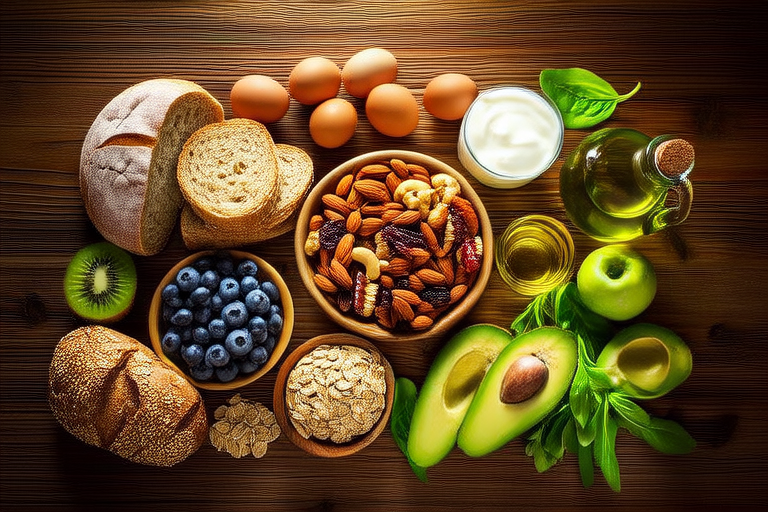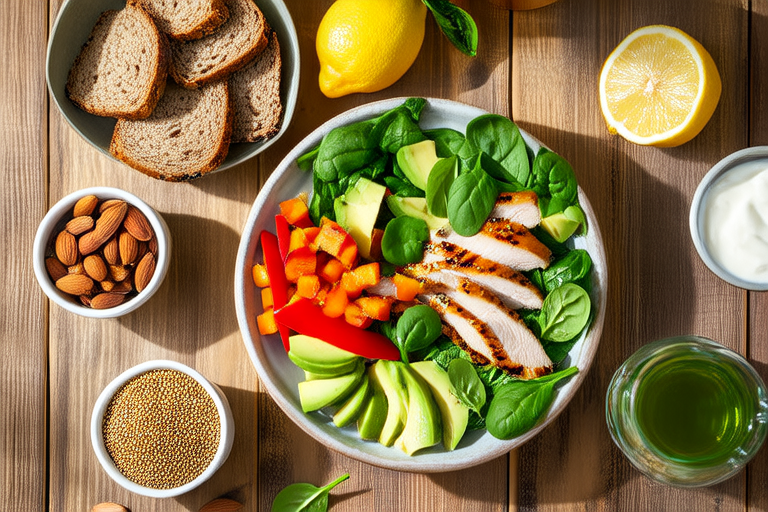10 Essential Guidelines for a Balanced and Healthy Diet
A balanced and healthy diet is foundational to overall well-being, supporting physical health, mental clarity, and long-term disease prevention. By following evidence-based recommendations, individuals can make informed food choices that promote vitality and longevity. Below are ten essential guidelines designed to help you achieve and maintain a nutritious eating pattern.
1. Prioritize Nutrient Balance
A healthy diet begins with ensuring an appropriate balance of macronutrients—carbohydrates, proteins, and fats—and micronutrients like vitamins and minerals. Carbohydrates should primarily come from whole grains, fruits, and vegetables, while proteins can be sourced from lean meats, legumes, and plant-based options. Healthy fats, such as those found in avocados, nuts, and olive oil, are crucial for brain function and hormone production. Avoid excessive consumption of processed foods, which often lack essential nutrients and are high in unhealthy additives.
2. Practice Portion Control
Even nutrient-dense foods can contribute to weight gain if consumed in excess. Portion control is key to maintaining energy balance and preventing overeating. Use visual cues to estimate serving sizes—for example, a serving of protein should be about the size of your palm, while a serving of carbohydrates resembles a cupped hand. Eating slowly and paying attention to hunger cues can also prevent unnecessary calorie intake.
3. Stay Hydrated
Hydration is often overlooked but is vital for optimal bodily functions. Water supports digestion, regulates body temperature, and aids in nutrient transport. Aim to drink at least 8 cups (64 ounces) of water daily, adjusting for factors like activity level and climate. Limit sugary beverages and alcohol, which can dehydrate the body and add empty calories. Herbal teas and infused water are excellent alternatives for variety.
4. Embrace Variety in Food Choices
Eating a wide range of foods ensures you receive a broad spectrum of nutrients. Different foods provide unique vitamins, minerals, and antioxidants that contribute to overall health. Incorporate colorful fruits and vegetables into meals, experiment with diverse grains like quinoa and farro, and rotate protein sources to keep your diet interesting and nutritionally complete. A varied diet also reduces the risk of developing food intolerances or deficiencies.
5. Focus on Whole, Minimally Processed Foods
Whole foods, such as fresh produce, whole grains, and unprocessed proteins, retain their natural nutrient profiles and are free from harmful additives. These foods are typically lower in sodium, sugar, and unhealthy fats compared to processed alternatives. When shopping, prioritize the perimeter of the grocery store, where fresh items are usually located, and read labels carefully to avoid hidden ingredients.
6. Include Adequate Fiber
Dietary fiber is essential for digestive health, helping to regulate bowel movements and prevent constipation. It also plays a role in managing blood sugar levels and reducing cholesterol. High-fiber foods include fruits, vegetables, legumes, nuts, seeds, and whole grains. Aim for at least 25 grams of fiber per day for women and 38 grams for men. Gradually increase fiber intake to avoid digestive discomfort.
7. Limit Added Sugars and Sodium
Excessive consumption of added sugars and sodium can lead to health issues such as obesity, hypertension, and heart disease. The World Health Organization recommends limiting added sugars to less than 10% of total daily calories, with further benefits seen at less than 5%. Similarly, aim to keep sodium intake below 2,300 milligrams per day. Opt for natural sweeteners like fruit and use herbs and spices to flavor meals instead of salt.
8. Adopt Mindful Eating Habits
Mindful eating involves paying full attention to the experience of eating, savoring each bite, and recognizing hunger and fullness cues. This practice helps prevent overeating and fosters a healthier relationship with food. Avoid distractions like television or smartphones during meals, and take time to appreciate the flavors and textures of your food. Eating mindfully can also reduce stress and improve digestion.
9. Plan and Prepare Meals Ahead
Meal planning and preparation are practical strategies for maintaining a healthy diet. Planning meals in advance ensures you have nutritious options readily available, reducing the temptation to opt for fast food or processed snacks. Batch cooking and storing meals in portioned containers can save time and encourage consistency. Keep healthy staples like frozen vegetables, canned beans, and whole grains on hand for quick meal assembly.
10. Be Consistent and Patient
Consistency is crucial when adopting a balanced and healthy diet. Small, sustainable changes are more effective than drastic overhauls that are difficult to maintain. Celebrate progress rather than perfection, and recognize that dietary habits take time to develop. Patience and persistence will yield long-term benefits, including improved energy levels, better mood, and reduced risk of chronic diseases.
Conclusion
Achieving a balanced and healthy diet requires a combination of nutrient awareness, mindful practices, and consistent effort. By prioritizing nutrient balance, controlling portions, staying hydrated, and embracing variety, you can create a sustainable eating pattern that supports your health goals. Remember to focus on whole, minimally processed foods, limit added sugars and sodium, and adopt mindful eating habits. With careful planning and patience, you can build a diet that nourishes your body and enhances your quality of life. Consistency is key—small, positive changes made over time lead to lasting results.










